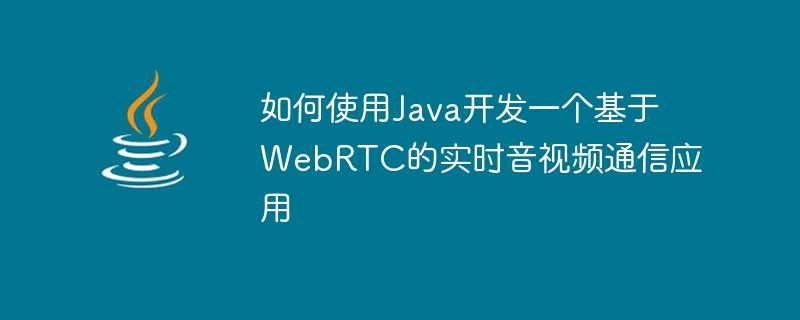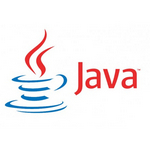
如何使用Java开发一个基于WebRTC的实时音视频通信应用
WebRTC(Web Real-Time Communication)是一种开放的实时通信协议,它使用了先进的音视频编解码技术,允许网页和移动应用之间进行实时音视频通信。在本文中,我们将介绍如何使用Java语言开发一个基于WebRTC的实时音视频通信应用,并提供具体的代码示例。
首先,为了使用WebRTC,我们需要准备一些必要的开发环境和工具。以下是所需的环境和软件:
接下来,我们开始编写代码。首先,我们需要导入WebRTC库。可以使用以下代码将其导入到我们的Java项目中:
立即学习“Java免费学习笔记(深入)”;
import org.webrtc.*;
然后,我们可以创建一个简单的WebRTC会话。以下代码展示了如何创建一个PeerConnection对象:
PeerConnection.RTCConfiguration rtcConfig = new PeerConnection.RTCConfiguration(null); PeerConnectionFactory factory = PeerConnectionFactory.builder().createPeerConnectionFactory(); PeerConnection peerConnection = factory.createPeerConnection(rtcConfig);
然后,我们可以设置一些事件监听器,以便在会话中处理不同的事件。以下代码展示了如何设置一个PeerConnection监听器来处理媒体流的添加:
peerConnection.addStreamObserver(new StreamObserver() {
@Override
public void onAddStream(MediaStream mediaStream) {
// 处理媒体流的添加
}
@Override
public void onRemoveStream(MediaStream mediaStream) {
// 处理媒体流的移除
}
});接下来,我们需要创建一个信令服务器以便在客户端之间进行通信。WebRTC不提供内置的信令服务器,所以我们需要自己实现一个。以下是一个简单的信令服务器示例代码:
public class SignalingServer {
public static void main(String[] args) {
// 启动信令服务器
}
}在信令服务器中,我们可以使用Java的网络编程API(如Socket)来与Client进行通信。我们可以使用以下代码来启动服务器,并监听客户端连接:
ServerSocket serverSocket = new ServerSocket(9000);
System.out.println("Signaling server started. Listening on port 9000");
while (true) {
Socket client = serverSocket.accept();
System.out.println("New client connected");
// 处理客户端连接
}当Client连接到服务器时,我们可以使用WebRTC的信令协议来交换Session Description Protocol(SDP)和ICE候选地址等信息,以建立PeerConnection。以下是一个简单的交换SDP的示例代码:
// Client A 发送offer给Client B String offer = "......"; String response = sendOfferToOtherClient(offer); // 发送offer给Client B,并等待回复 // Client B 收到offer,生成answer给Client A String answer = "......"; sendAnswerToOtherClient(answer); // 发送answer给Client A
在服务器端编写代码来处理信令和SDP交换的细节是非常复杂的,因此我们只提供了一个简单的示例代码。实际上,在真实世界的应用程序中,您可能需要使用更复杂的信令协议和技术来处理媒体流的传输。
最后,我们可以创建一个简单的用户界面,以便用户可以与其他用户进行音视频通话。我们可以使用Java的图形用户界面(GUI)工具包(如Swing或JavaFX)来创建用户界面。以下是一个简单的Swing用户界面示例代码:
public class AppGui {
private JFrame frame;
public AppGui() {
frame = new JFrame("WebRTC App");
frame.setSize(800, 600);
frame.setDefaultCloseOperation(JFrame.EXIT_ON_CLOSE);
// 创建用户界面组件,并添加到frame中
frame.setVisible(true);
}
public static void main(String[] args) {
SwingUtilities.invokeLater(() -> {
new AppGui();
});
}
}上述代码中的createUserInterface方法可以用来创建音视频通信的相关组件,如视频显示区域、音频输入输出控制等。
总结起来,使用Java开发基于WebRTC的实时音视频通信应用需要准备必要的开发环境和工具,并使用WebRTC库来实现实时通信功能。在应用程序中,我们需要创建PeerConnection对象、设置事件监听器、实现一个信令服务器来处理信令交换等。最后,我们可以创建一个用户界面,使用户可以与其他用户进行音视频通话。
请注意,本文只提供了一个简单的示例,实际的应用程序可能需要更多的代码和技术来实现更复杂的音视频通信功能。但是,通过这个示例,您可以开始学习如何使用Java和WebRTC开发实时音视频通信应用。
以上就是如何使用Java开发一个基于WebRTC的实时音视频通信应用的详细内容,更多请关注php中文网其它相关文章!

java怎么学习?java怎么入门?java在哪学?java怎么学才快?不用担心,这里为大家提供了java速学教程(入门到精通),有需要的小伙伴保存下载就能学习啦!

Copyright 2014-2025 https://www.php.cn/ All Rights Reserved | php.cn | 湘ICP备2023035733号